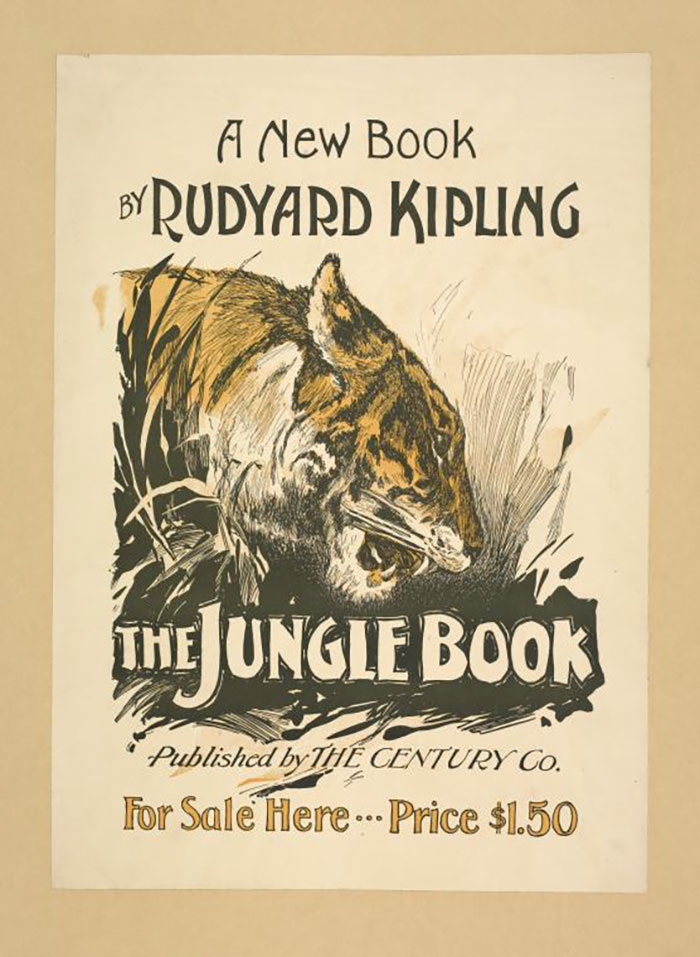There probably isn’t a single person who hasn’t heard about the legendary Mowgli from Rudyard Kipling’s famous work, The Jungle Book. Yet many folks have no idea that a real-life story inspired this book.
Meet Dina Sanichar, or “the Indian wolf-boy,” a feral boy who lived in the 19th century and was raised by wolves—many believe that Dina was the real inspiration behind The Jungle Book. However, it’s worth noting that the actual story isn’t as fun as the one we’re used to. In reality, it’s much more tragic than that.
In fact, Dina was one of many feral children found in India over the years. Turns out, the country has a long history of children raised by all kinds of animals, such as panthers, dogs, and even chickens!
Meet Dina Sanichar: the Real Mowgli
Image credits: Wikimedia Commons
Dina Sanichar was discovered by a group of hunters
Image credits: Wikimedia Commons
When discovered in Uttar Pradesh in 1872, the boy was walking on all fours and following a pack of wolves. After that, the boy and his companions retreated into a den. This whole sight was both intriguing and absolutely terrifying for the hunters.
Since the mysterious boy piqued their interest, the crew was determined to get their hands on him. First of all, the hunters attempted to get him out of the cave by setting it on fire. When the wolves and the boy finally came out, the hunters killed the wolves and took the boy with them. The boy was believed to be six to ten years old.
Image credits: Listopedia
Mowgli Real Story: From the Forest to Civilization
The hunters brought the boy to an orphanage where he was baptized and given the name Sanichar, which means “Saturday” in Urdu because that’s the day he arrived at the orphanage.
Sanichar struggled a lot. The boy was considered to have a really low IQ: Father Erhardt, who was the head of the orphanage, noted that though the boy was “undoubtedly pagal (imbecile or idiotic), [he] still shows signs of reason and sometimes actual shrewdness.” Besides, he never learned how to speak. At the orphanage, many tried to teach him to do so, but he never managed to learn how to speak, read, or write.
The real-life Mowgli communicated by making animal noises and continued to walk on all fours
Image credits: Wikimedia Commons
Although eventually Sanichar learned to walk on two legs, he still struggled with wearing clothes
Image credits: Wikimedia Commons
When he first arrived at the orphanage, he refused to eat cooked meals and would sharpen his teeth on bones
Image credits: Listopedia
But despite showing almost no human traits, he made a human friend. Apparently, in the orphanage, there was another feral child who also grew up with animals. Since both boys grew up in wildlife, they had difficulty relating to humans, which probably was why they managed to form this distinct bond with one another.
Father Erhardt noted that “a strange bond of sympathy attached these two boys together, and the elder one first taught the younger to drink out of a cup.”
One of the few human habits Sanichar integrated into his own life was smoking
Image credits: Wikimedia Commons
Many believe that smoking was what later led him to develop tuberculosis
Image credits: Wikimedia Commons
Dina’s development was overall abnormal: even after ten years of living among humans, he was very anxious and jumpy, barely five feet tall, and had huge teeth and a low forehead. Having spent most of his childhood with wolves, he must have felt like a confused alien, forcefully separated from his own home.
Dina passed away in 1895 from tuberculosis
Image credits: Wikimedia Commons
However, there were more feral children cases in India over the years
Image credits: Wikimedia Commons
More Documented Cases of Feral Children
Around the time of Dina’s discovery, four other feral wolf children were also reported in India. Over the years, there have been many more of these feral children cases. Although many of them were later debunked, some are rather convincing. We’ll never know!
Yet, one of the most famous cases involved two girls named Amala and Kamala. Reportedly, these girls were rescued from a pack of wolves in India in the 1920s. The man who found them was named J.A.L. Singh, and he claimed they howled at the moon, walked on four legs, and only ate raw meat.
Reality Meets Fiction
These stories about feral children raised by animals have inspired many writers and poets
Image credits: Wikimedia Commons
One such artist was the earlier mentioned Rudyard Kipling. The author of The Jungle Book never explicitly claimed that his Mowgli character was based on Dina Sanichar. However, the story of Dina Sanichar shares parallels with Mowgli’s upbringing among animals in the jungle. Besides, the timeline aligns quite perfectly.
The Jungle Book was published roughly 20 years after the boy’s discovery
Image credits: Wikimedia Commons
Unlike Mowgli, Dina didn’t leave the jungle of his own will
Image credits: Wikimedia Commons
The Sad and Tragic Life of Dina Sanichar
Even though he was forcefully brought back to society, he never met the expectations of those around him. After spending the first six years of his life living in the jungle, it was impossible for him to rewire his brain and become a real human being. So, for the rest of his life, he continued to be this fascinatingly tragic being he had been conditioned to be.
In a way, Dina was psychologically and developmentally bound to stay in the jungle for the rest of his life
Image credits: Wikimedia Commons
333Kviews
Share on FacebookKilling his family has no impact to behavior? You would trust and be normal after you see your family members, you would ike to be like them? f... idoimatic thinking. Closest friend and guards dies front of your eyes. No one trust persons who murder your family and try say best for you, nobody never should you cant ask it from no-one. ... b******t psychiatric theories. thay human can do what ever and victims has no emotions. they has been only curious, fascinated, and they say that they are like you, human being, even are against you. I bet he would have live natural wolf life in forest, and wouldn't even care human life. Child services would think othervise but killing he's pack wen too far, no coming back there, life whit wolves is better chise between these two.
India was still under british colonialism during 1872. People were rewarded by the colonisers for killing wild animals.
Load More Replies...REad Kipling, they killed everything. Kipling has problems, innately because of who he was.
Load More Replies...WELL.. that was just disturbing. They killed the only family he knew. THEY are the savages.
Killing his family has no impact to behavior? You would trust and be normal after you see your family members, you would ike to be like them? f... idoimatic thinking. Closest friend and guards dies front of your eyes. No one trust persons who murder your family and try say best for you, nobody never should you cant ask it from no-one. ... b******t psychiatric theories. thay human can do what ever and victims has no emotions. they has been only curious, fascinated, and they say that they are like you, human being, even are against you. I bet he would have live natural wolf life in forest, and wouldn't even care human life. Child services would think othervise but killing he's pack wen too far, no coming back there, life whit wolves is better chise between these two.
India was still under british colonialism during 1872. People were rewarded by the colonisers for killing wild animals.
Load More Replies...REad Kipling, they killed everything. Kipling has problems, innately because of who he was.
Load More Replies...WELL.. that was just disturbing. They killed the only family he knew. THEY are the savages.

 Dark Mode
Dark Mode 

 No fees, cancel anytime
No fees, cancel anytime 

































































256
41